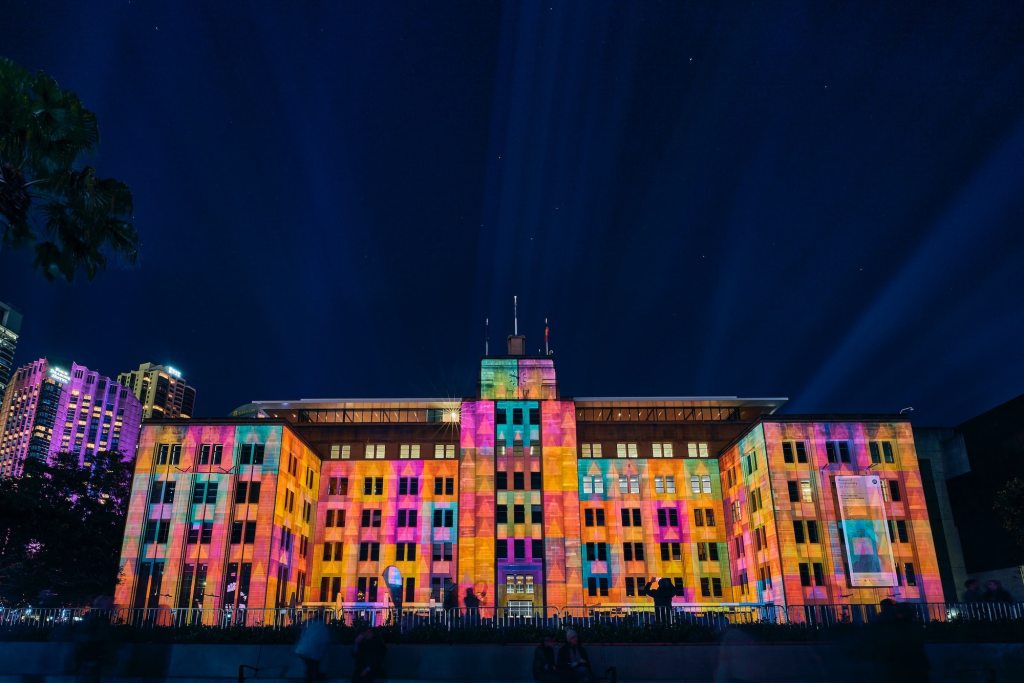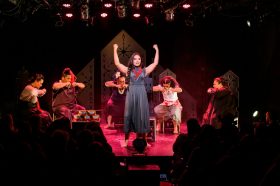How do you envision the future of your art form, when you are still trying to navigate the daily challenges of operating during the third year of a global pandemic?
When you can barely stop to breathe, let alone dream?
Such is the challenge placed before us with the recent call for submissions for a National Cultural Policy from newly appointed federal Minister for the Arts Tony Burke.
The call is a welcome one. We need a vision for the future of Australian arts makers. We need to try to imagine a path ahead and set out a roadmap to get there.
We need this blue-sky dreaming, but the timing makes serious thought or interrogation by the sector deeply challenging, to say the least. We are all in the midst of just surviving.
At the end of 2020, as we all thought we had successfully navigated our way out of COVID and were heading into a post-pandemic life, many of in the industry talked about ‘building back better’. We talked about how we could make sure that when we returned, we could do things differently. We imagined a more inclusive, more engaged and more collaborative sector.
But the reality has been two-and-a-half years of non-stop flying by the seat of our pants. After the last few years we’ve had, just getting a single show up anywhere has been a triumph against all odds and worth celebrating.
So, it’s hard to think past the support that we actually need right now, the kind of support that can’t wait for a new cultural policy to make its way through the corridors of power.
It’s harder still to imagine a scenario in which we can actually consider asking for that pony we’ve been dreaming about for years now. And more, can we consider asking for the pony and the hay to feed it and sustain it tomorrow and into the future?
The sector needs a boost right now
For the arts sector, the pandemic is far from over. Support from governments has run dry, yet touring is no easier. Artists remain at risk of contracting COVID-19 and show cancellations are still very real. Audience patterns remain – and look likely to remain – unpredictable. Our much-needed ticket sales are frighteningly unreliable.
Add to that cost-of-living pressures, skills shortages, environmental damage to our very workplaces and material supply chain issues, it’s clear we are in a time of great uncertainty.
With heavy losses suffered by many arts makers and venues in the first half of 2022, budgets are tighter than ever and will be for the foreseeable future. Programming is increasingly risk-averse, and the presentation of new work is being held back in favour of the tried and tested.
Giving a boost to audiences would help. A federal roll-out of the successful ‘Dine and Discover’ vouchers distributed in New South Wales throughout 2021 and 2022, perhaps? One specifically for the arts sector? One for our theatres, venues, museums and galleries, be they large or small,
Artists and arts companies also need a boost – and now. Not just a one-off cash splash, but some serious ongoing support to sustain us through this challenging period, so we can better support the artists and communities that rely on us.
Many of us, after two-and-a-half years of daily crises are close to burn-out. We’ve lost too many people from the arts sector over the past few years when work dried up completely. We need the government to recognise the dire situation of the arts sector as an urgent need or we will see the continued loss of experience and expertise over the coming months. And we may not get it back.
Read: Creating a big picture approach to cultural policy
Strong Organisations
Our arts institutions are under-resourced, with reserves rapidly diminishing, and operating in an impossible environment. For our arts companies to remain strong, to be able to plan ahead with certainty and commission new work, we urgently need an increase in funding to the Australia Council for the Arts, specifically directed to investment in the small to medium sector.
Increased investment in companies nurturing young audiences and young artists is also vital, and at present this sector is dangerously under-resourced. This crucial area is at the intersection of arts, education, and wellbeing and delivers a clear public good deserving of support. Without this support, how are we nurturing both the audiences and artists of the future?
New and diverse audiences
If we are to reach new audiences, we need to increase investment in regional touring. A one off $5M increase in investment into regional touring was provided by the federal government in 2021, a huge boost to regional touring when support was urgently needed. However, this was only provided for one year. This boost in support needs to be sustained and ongoing, especially at a time when inflation is going through the roof.
If state and federal governments can work together with an aim to harmonising the country’s touring processes, we would also begin to see a greater diversity and of new work on our stages.
Greener arts
The impact of climate change has already been clear for several years on the arts sector, with regional arts institutions suffering from unprecedented fire and floods over recent years. And this impact is only going to get worse over coming years.
So that we are not contributing further to this crisis, we need to invest in changing the way we entertain you – and this is especially true for touring organisations.
We need to acknowledge that to reach audiences around our vast continent means we are typically engaging in significant travel that is not going to be sustainable or compatible with a Net Zero future. The whole model of touring needs to change, but this also requires resources most of us don’t have. What we need is an urgent investment in personnel and expertise for the future sustainability of the arts sector and our planet.
A living wage for artists
Great art does not just appear. It takes an artist with time and space. Most ticket holders don’t realise the production they’re watching tonight may have taken years to get to the stage. And that takes investment.
We need to recognise that the arts are nothing without artists, and that the ability of artists and arts workers to create, perform, and work has been severely hampered over recent years. Long-term support for outstanding arts makers to create, develop and make art is essential.
It should not just be arts leaders and artists embedded in institutions who are supported in this way, although this is also vital, but our independent artists, our writers, musicians, composers, directors, designers, choreographers and more.
A living wage for artists (it currently exists in France and is being trialled in Ireland) would be a great start for the government to recognise, value and invest in Australia’s artistic community
Celebrating our diversity
We need the art on our stages, in our books, on our radios and in our institutions to reflect the full diversity of Australian society and culture. And that takes investment in artists from diverse backgrounds, and in a wide variety of arts institutions right around Australia. It takes support for training, and it requires organisations willing and able to take risks because they have the resources and time to develop and nurture audiences and their communities.
This is vital for the future of all our art-forms. For if they don’t represent the full diversity of Australian culture, if the doors do our institutions are not open and accessible to all Australians, if the art we make does not resonate with our audiences, then it ceases to be relevant.
Championing First Nations artists
Finally, and most importantly, our art, artists and arts institutions need to respect and celebrate our First Nations cultures. We need to champion the world’s oldest living culture, for all its richness and diversity. We need to increase and sustain investment in our First Nations arts organisations, and better support our leading First Nations artists and arts leaders.
This will take investment in training, investment in artists, investment in current and future artistic leaders and it will mean ensuring our major artistic institutions and organisations engage deeply and meaningfully with First Nations artists and their work year-round.
There’s work to do. We can dream for the future, if we take some time out of the daily challenges. But first we do need to acknowledge and deal with the present.





